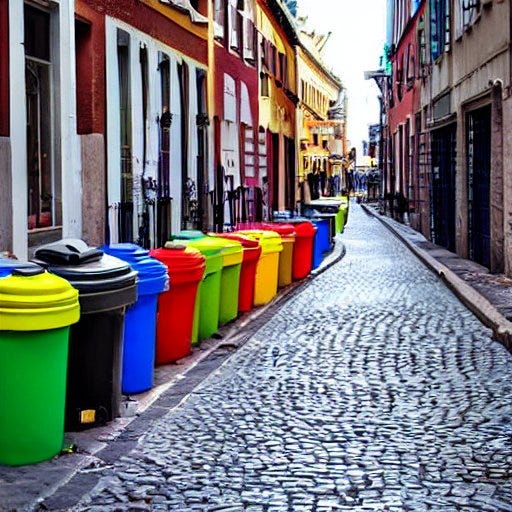
Vol. 1, No. 22 — A few days after settling into my student apartment in Germany, it was time to take out the trash. I tied up the plastic bag, brought it to the building’s dumpster, and went off to class. When I arrived home later that evening, I saw the same bag lounging on the ground next to the dumpster with a handwritten note stuck on top. I took the note upstairs and after a short session with my German dictionary decoder ring, I realized what had happened. The sanitation workers heard glass inside and refused the bag.
Germany recycles glass, plastic, aluminum, paper, and organics. What remains after all of this has been sorted out is the only stuff actually considered garbage. It sounds intimidating, but they do make it as easy as possible. What a surprise, the Germans have found a way to efficiently organize such a system.
On street corners at regular intervals, there are different colored bins to put your recycling in. Some buildings have dedicated trash dumpsters, but the recycling containers are out in public.
Paper and cardboard go in the blue bin. There will probably be a sign on it instructing you to break down any boxes so they pack flat. This has a very “be kind, rewind” vibe, and I will admit to not doing this on occasion.
Glass goes into either the green or white bin depending on if it is clear or brown glass. Spain only has a single glass bin as modern sorting systems can deal with this now. Take off the lids and rinse out the containers or else bad karma will come your way.
The yellow bin is for containers made of either plastic or metal. Every pop bottle and soup can in Europe has a little emblem on it to indicate if it belongs in this bin. There is also a container type called a “Tetra Brik” in use all over Europe which goes in here. It feels like a mix between cardboard and plastic and is used for absolutely everything. It has become so synonymous with “container” that people commonly say “get a brik of whatever” from the store.
The last bin is the brown bin. The brown bins smell lovely. It’s a treat to pass by them basking in the hot summer sun, giving off a bouquet of the organic food waste percolating inside. OK, so they’re not usually that bad, but when you find a ripe one it makes an impact. They can be full of coffee grounds and expired bread, or chicken juice and fermented fruit. It’s quite the spectrum.
It all might sound overwhelmingly complex but after a few days of playing pick-the-bin, it becomes automatic. You can also choose to ignore all of it and toss the entire rainbow of waste into a dumpster. Just make sure your jar and bottle noise strategy is on point or it may find its way back to your front door like a haunted Hefty poltergeist.
Midwestern Europe: Volume 1 with the first 52 entries in this series is available now on Amazon US, Spain, and Germany in hardcover, paperback, and Kindle formats!
They were made with much love. Pick up a copy, you won’t be disappointed.
If you’ve been enjoying these entries, please consider dropping by the product page and leaving a star rating based on what you’ve read here. Your investment of a minute or two would totally make my day! Many thanks.

